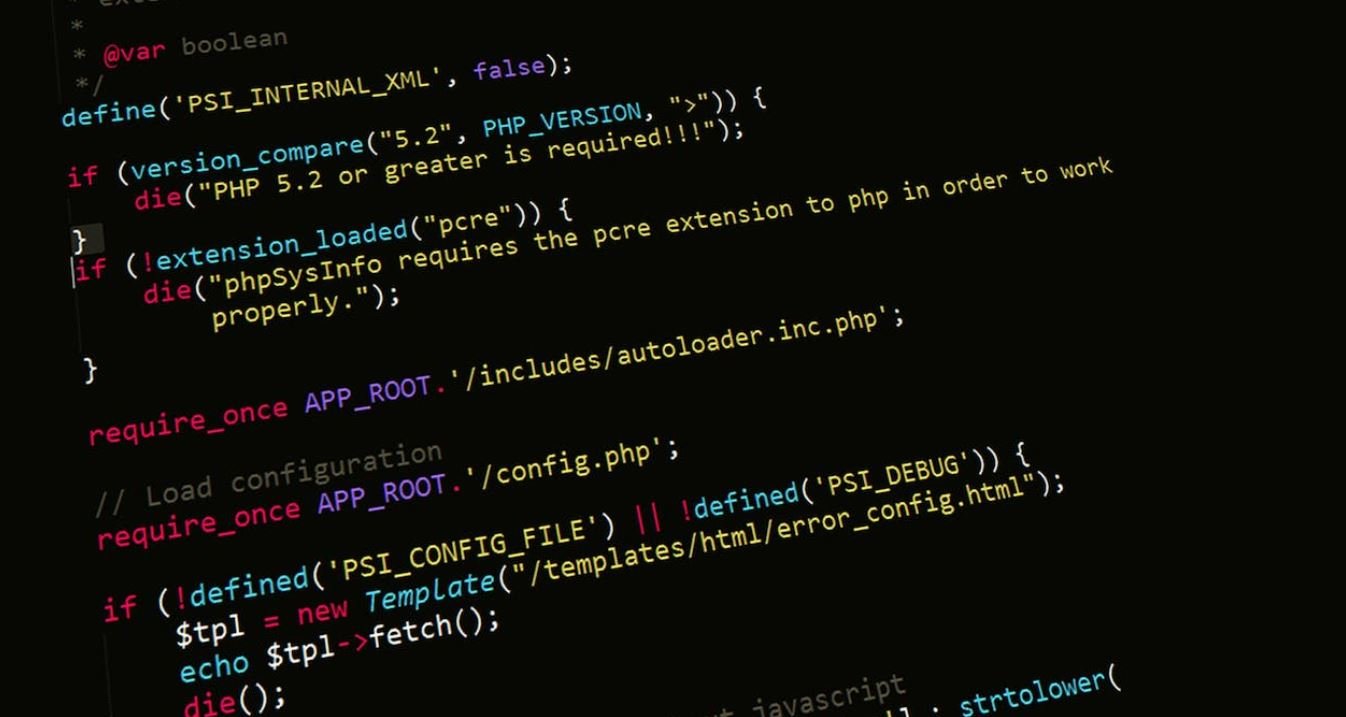What Does Training a Model Mean?
Training a model is an essential step in the field of machine learning, where a computer algorithm learns from data and improves its performance on a specific task through experience. It is one of the key elements in building intelligent systems and making predictions.
Key Takeaways:
- Training a model refers to the process of teaching a machine learning algorithm how to make predictions or perform a specific task.
- During training, the algorithm learns from a labeled dataset to identify patterns, relationships, and features.
- Training involves determining the optimal parameters or weights of the model to minimize errors and improve accuracy.
- Data preprocessing, feature engineering, and model selection are important steps in preparing the data for training.
Data preprocessing is often a crucial step in training a model. It involves cleaning the data, handling missing values, and scaling or normalizing the features to ensure they are on a similar scale. *Accurate data preprocessing enhances the model’s performance by reducing noise and making it more robust to variations in the data.* Once the data is preprocessed, it can be split into training and testing sets.
Feature engineering is the process of selecting and extracting relevant features from the raw data. *Creating appropriate features can greatly impact the model’s performance.* These features can be derived from the existing ones or generated based on domain knowledge. They help the model understand the underlying patterns and make better predictions.
Model selection refers to choosing the most suitable algorithm or architecture for the task at hand. Different models have different strengths and weaknesses, and selecting the right one is crucial for achieving optimal results. *It is important to consider factors such as the complexity of the problem, the amount of available data, and the interpretability of the model.* Some commonly used machine learning models include decision trees, support vector machines, and neural networks.
Training Process
During the training process, the algorithm adjusts its internal parameters or weights to minimize the difference between the predicted outputs and the actual outputs (labels) in the training data. This optimization process is often performed using an optimization algorithm such as gradient descent.
- The model computes predictions based on the current parameter values.
- The error or loss is calculated by comparing the predicted outputs with the actual outputs.
- The error is used to update the parameters in a way that reduces the error for future predictions.
- This process is repeated iteratively until the model reaches a point where the error is minimized and the predictions are accurate.
Once the model is trained, it can be evaluated using the testing data to assess its performance on unseen examples. The evaluation metrics vary depending on the task at hand. For example, in a classification task, metrics such as accuracy, precision, recall, and F1 score are commonly used.
Tables
| Model Type | Pros | Cons |
|---|---|---|
| Decision Trees | Easy to interpret, handle both numerical and categorical data | Prone to overfitting, can be unstable |
| Support Vector Machines | Effective in high-dimensional spaces, handle both linear and non-linear relationships | Can be computationally expensive for large datasets, sensitive to parameter selection |
| Metric | Description |
|---|---|
| Accuracy | The proportion of correctly predicted instances out of the total number of instances in the test set |
| Precision | The proportion of true positives (predicted positive instances that are actually positive) out of all predicted positive instances |
| Recall | The proportion of true positives out of all actual positive instances |
| Model Type | Training Time |
|---|---|
| Decision Trees | Fast |
| Neural Networks | Slow |
Training a model involves an iterative process of adjusting parameters to minimize errors and improve predictions based on labeled data, while considering data preprocessing, feature engineering, and model selection.

Common Misconceptions
What Does Training a Model Mean?
There are several common misconceptions about what it means to train a model. Let’s address some of these misconceptions:
Misconception 1: Training a model is equivalent to teaching it like a human
- Training a model is an automated process that utilizes data and algorithms.
- Models develop patterns and learn from data rather than acquiring knowledge intuitively.
- Human reasoning and understanding can differ significantly from model-based decision-making.
Misconception 2: Training a model is a one-time task
- Training a model is an iterative process that requires continuous improvement.
- Models need to be frequently retrained to adapt to changing data or new scenarios.
- Regular updates ensure optimal performance and accuracy over time.
Misconception 3: Training a model is a purely technical task
- Training a model involves a combination of technical expertise and domain knowledge.
- Understanding the problem domain is essential for selecting appropriate features and evaluating model performance.
- Data preprocessing, feature engineering, and model selection are critical steps during training.
Misconception 4: Training a model guarantees perfect accuracy
- Training a model does not guarantee perfect accuracy in predictions.
- Models can make errors, especially when encountering unfamiliar or ambiguous data.
- Evaluating and fine-tuning the model can help minimize errors and improve overall performance.
Misconception 5: Training a model is only for experts
- While training complex models requires expertise, there are user-friendly tools and libraries available to help beginners.
- Many online resources and tutorials provide step-by-step guidance for training models.
- By starting with simpler models and gradually expanding knowledge, anyone can learn to train models effectively.

Understanding the Basics
Before delving into the intricacies of training a model, let’s start by understanding some fundamental aspects. The following table provides a summary of key terms and concepts related to machine learning:
| Term | Definition |
|---|---|
| Supervised Learning | A type of learning where the model is trained using labeled data to make predictions or classifications. |
| Unsupervised Learning | A type of learning where the model is trained without labeled data, relying on patterns and relationships in the input. |
| Training Data | The dataset used to train the model; it consists of input features and corresponding target values or labels. |
| Validation Data | Data used to fine-tune the model during training. It helps prevent overfitting and optimizes model performance. |
| Testing Data | Data used to assess the final performance of the trained model. It is independent of the training and validation data. |
| Feature Engineering | The process of selecting, transforming, or creating features from the available data, often enhancing model accuracy. |
| Loss Function | A function that measures the discrepancy between predicted and actual values, guiding the model towards optimal parameters. |
| Hyperparameters | Settings or configurations that are not learned by the model but are chosen by the training process or practitioner. |
| Epoch | A complete pass over the entire training dataset during model training, involving multiple iterations. |
| Batch Size | The number of training examples used in one iteration to update the model’s weights through gradient descent. |
Datasets for Different Domains
The availability and diversity of datasets play a crucial role in training accurate and reliable models. Let’s explore various domains and their associated datasets:
| Domain | Associated Dataset |
|---|---|
| Image Recognition | ImageNet, a dataset with millions of labeled images across thousands of categories. |
| Natural Language Processing | Common Crawl, a dataset containing trillions of words from websites, news articles, and books. |
| Speech Recognition | LibriSpeech, a large-scale dataset of read English speech from diverse speakers and subjects. |
| Medical Imaging | NIH Chest X-rays, a dataset of 112,120 X-ray images with associated radiology reports. |
| Financial Analysis | Quandl Wiki Stock Prices, a comprehensive dataset covering stock prices and financial fundamentals. |
| Recommendation Systems | MovieLens, a benchmark dataset containing movie ratings and user preferences. |
| Genomics | 1000 Genomes Project, a catalog of human genetic variations across diverse populations. |
| Climate Modeling | NOAA Global Historical Climatology Network, a collection of climate records from thousands of weather stations. |
| Social Network Analysis | Facebook’s Graph API, a rich dataset capturing social connections, interactions, and user behavior. |
| Automotive Industry | Stanford Autonomous Driving Dataset, a large-scale collection of labeled driving scenes. |
Popular Machine Learning Algorithms
There exist numerous algorithms in the realm of machine learning, each with unique strengths and applications. The following table highlights some popular ML algorithms and their main characteristics:
| Algorithm | Key Features |
|---|---|
| Linear Regression | Estimates relationships between input features and continuous target variables. |
| Decision Trees | Creates tree-like models by partitioning data based on feature values, suitable for classification and regression. |
| Random Forests | Ensemble of decision trees that improves performance and reduces overfitting. |
| Support Vector Machines | Constructs hyperplanes to separate data points of different classes in high-dimensional spaces. |
| K-Nearest Neighbors | Makes predictions based on the k-nearest labeled instances in the training data. |
| Naive Bayes | Relies on the Bayes’ theorem, assuming independence between features, often used in text classification. |
| Artificial Neural Networks | Modeling inspired by the human brain, consisting of interconnected layers of artificial neurons. |
| Convolutional Neural Networks | Designed for image processing, leveraging convolutional layers to automatically learn spatial hierarchies. |
| Recurrent Neural Networks | Sequentially process data, commonly applied in speech recognition and natural language processing. |
| Gradient Boosting | Builds strong models iteratively by fitting new models to weaknesses identified by prior models. |
Performance Metrics for Evaluation
Once a model is trained, it is crucial to evaluate its performance using suitable metrics. The table below highlights common performance metrics:
| Metric | Definition |
|---|---|
| Accuracy | The proportion of correctly predicted instances over the total number of instances. |
| Precision | The ratio of true positive predictions to the sum of true positive and false positive predictions. |
| Recall | The ratio of true positive predictions to the sum of true positive and false negative predictions. |
| F1 Score | The harmonic mean of precision and recall, providing a balanced measure. |
| ROC AUC | The area under the Receiver Operating Characteristic curve, indicating classification accuracy. |
| Mean Squared Error | Average of the squared differences between predicted and actual values for regression problems. |
| R^2 Score | The proportion of the response variable’s variance captured by the model in regression tasks. |
| Log Loss | The logarithm of the predicted probability of correct classification. |
| Confusion Matrix | A table representing true and predicted labels, allowing the calculation of various metrics. |
| Kappa Statistic | A measure of agreement between predicted and actual classifications, accounting for chance agreement. |
Common Challenges in Training
Training a model is not always straightforward, as various challenges may arise during the process. The following table highlights some common obstacles:
| Challenge | Description |
|---|---|
| Overfitting | When the model excessively captures noise and specific patterns from the training data, resulting in poor generalization. |
| Underfitting | When the model fails to capture the underlying structure of the data, leading to suboptimal performance. |
| Data Insufficiency | When the available dataset lacks sufficient representative examples, hindering the model’s ability to learn. |
| Data Imbalance | When the distribution of classes or targets in the dataset is heavily skewed, leading to biased model results. |
| Feature Selection | Choosing the most relevant and informative features from a large pool can be challenging, impacting model performance. |
| Hyperparameter Tuning | Finding the optimal combination of hyperparameters requires significant experimentation and can be time-consuming. |
| Computational Resources | Training complex models with large datasets may demand substantial computational power and time. |
| Model Interpretability | Making models understandable is a challenge, especially for complex deep learning models with numerous parameters. |
| Algorithm Selection | Choosing the most suitable algorithm for a specific task requires considering various factors to achieve optimal results. |
| Ethical Considerations | Developing fair and unbiased models and addressing potential biases in the training data is essential for ethical AI development. |
The Impact of Model Training
Training a model is a critical step in machine learning, allowing the creation of predictive, decision-making systems. However, training a model encompasses more than simply fitting data to an algorithm. It involves selecting the right dataset, choosing appropriate algorithms, evaluating performance, and overcoming various challenges. By understanding the underlying principles and methodologies, practitioners can harness the power of machine learning to drive innovation and solve complex problems.
What Does Training a Model Mean? – Frequently Asked Questions
What is the concept of model training?
Why is training a model necessary?
What are the steps involved in training a model?
What is a loss function in model training?
What are hyperparameters in model training?
What is model evaluation?
How long does model training typically take?
Can pretrained models be used instead of training from scratch?
What is overfitting in model training?
What is underfitting in model training?




